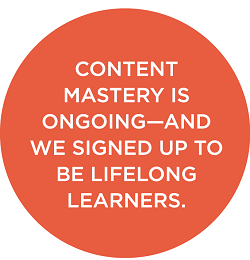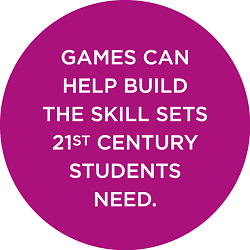Why Do Our Classrooms Still Look Like the 20th Century?
Technology in the classroom has increased. Has the quality of our lessons and student interest kept pace?

It’s 2018, nearly 20 years into the 21st century, and it’s time to ask ourselves if our classrooms really reflect 21st century technology and the innovative instruction that our students and society need. It’s a difficult question. Many will say the money isn’t there, that there is curriculum to teach, or that standardized testing restricts us too much. The list could go on and on, but there’s more to why many of our classrooms look eerily similar to those of the last century.
The easy answer is more technology … for technology’s sake. While using technology in the classroom has increased dramatically over the past decade, has the quality of lessons and student interest in them kept pace? I often think about this as I work on creating units and lessons. How can I get all of my kids interested in topics like genetics, geologic history, or better yet, chemical equations? It’s tough sometimes, but this is what I find most fascinating about being a teacher. The methodology that I use to help me succeed is not some ancient secret — it’s a basic mindset that I follow when looking to innovate my lessons and engage my students.
Master Your Content
I believe this is the first and most important aspect of a teaching practice that leads to the ability to create innovative lessons. Content for the most part changes slowly and allows the opportunity to master the different areas of your content over time.

Chunk it if you have to, but knowing what you are teaching helps with confidence in lesson writing, presentation, questions and answers, and most importantly, in building respect and confidence from your students that you really know what you are talking about. Content mastery is ongoing and as educators we signed up to be lifelong learners.
Think Outside the Box
Lessons that are different and unexpected by your students are the basis for sparking increased interest and engagement. One way I do this is by incorporating board games that are content-based (yes, they exist). I use them at the beginning or end of a lesson/unit to introduce or reinforce the area of study. Games like Pandemic, Photosynthesis, Compound, Evolution, and Terraforming Mars are great at helping students expand their knowledge and incorporate 21st century soft skill sets like problem- solving, collaboration, cooperation, critical thinking, and patience.

Or how about a creative look at the value of scientific evidence, reasoning, and argumentation by studying the validity of Cryptids — you know, Bigfoot, Nessie, and friends. It’s off the well-beaten path, but the interest and buy-in from students is amazing!
Integrate Your Lessons
Through your lesson and unit designs, being able to integrate other subject areas into your overall plan will enrich and expand the validity of what is being taught and learned in your class.
The world isn’t a silo and we must drop our content ego if we are truly to give our students an opportunity to engage with the world from a holistic perspective. Including a math piece, a reading selection, a historical reference, a scientific base, and an arts and humanities piece will create the connections — and the learning practices — that are being discussed and sought after in the professional workplace.
Make learning fun in your classroom and don’t be afraid if a lesson fails. Use that as a lesson in itself. You and your students will learn from these experiences and that’s what education is all about.

